"No Direction Home: Bob Dylan" - PBS Broadcast This Week
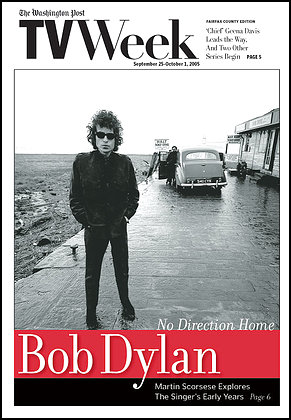
PBS will broadcast on the American Masters Series "No Direction Home: Bob Dylan" , a film by the auteur Martin Scorsese. Airing on Monday and Tuesday (SEPTEMBER 26-27 AND IN THE UK ON BBC'S ARENA SERIES SEPTEMBER 26). Definitely not to be missed.
Here's a terrific trailer preview movie clip (.WMV file).
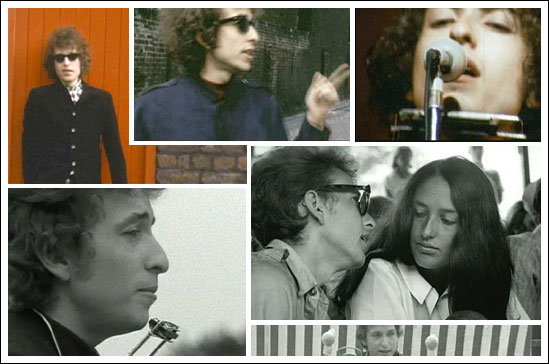
And Bob Dylan tangling with the media seems even more fun today. From the Editor & Publisher's "How Bob Dylan Beat the Press":
One reporter asks if he agrees that his early records were better than his latest. Another wonders if he considers himself “the ultimate beatnik.” Bob asks him what HE thinks about that. The man says he can’t comment because he has never heard Dylan sing.
“You’ve never heard me sing and yet you want to sit there and ask me these questions?” Dylan replies.
Sadly, the “Ballad of a Thin Man” continues with today's media ineptitude and corporate consolidation of a free press.
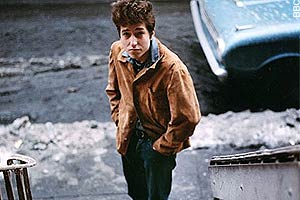
Chromewaves has a nice roundup of some of the latest Bob Dylan offerings in print from UK's The Independent:
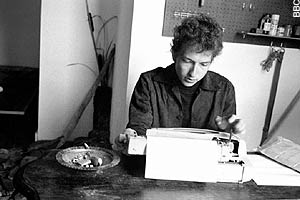
And more on the documentary.
From Salon.com 's "No direction here" by Steven Hart:
"Look, I know Dylan's a legend and all, but what's the big deal? Why's he important?"
The only response to such doubters is: If you value popular music as a venue for serious artistic purpose, thank Bob Dylan, who infused rock and folk music with blazing intellectual energy and visionary poetry. If you look back on the late '60s and early '70s as a lost era of pop music ambition and innovation, then thank Bob Dylan, whose 1960s albums were the benchmark that motivated artists across the pop spectrum, from the Beatles and the Rolling Stones to Stevie Wonder and Marvin Gaye, to stake claims for themselves as something more than purveyors of disposable junk music. And if you despair of the legions of puling singer-songwriters who followed in his wake ... well, don't blame Bob Dylan. The man can't help it if his imitators lack his outsize talent."
From Washington Post's "The Revolutionary Bob Dylan" by Richard Harrington:
"The film is not the definitive career portrait some might want or expect. It focuses on Dylan roughly from 1961, when he first arrived in New York and immersed himself in the Greenwich Village folk scene, to 1966. That year, after a tumultuous tour of England during which angry folk purists greeted his decision to go electric with shouts of "Judas" and "traitor," Dylan was in a near-fatal motorcycle accident near his home in Woodstock, N.Y. After that he became a recluse for close to a decade.
But in the mid-'60s, Dylan changed popular music, and popular culture, and Scorsese shows us how."
From Telegraph's "Definitive Dylan" by Mick Brown:
"Inevitably, the most compelling witness to Dylan's life is himself, and it is his interviews that form the spine of the film. Here is Dylan at his most candid and laconic, a constant flicker of amusement tugging at the corners of his mouth. On his college years: "I didn't go to classes. I just didn't feel like it." On Woody Guthrie: "You could listen to his songs and learn how to live." And on his own artistic ambitions: "All the great performers had something in their eyes. It was that 'I know something that you don't know.' And I wanted to be that kind of performer." "
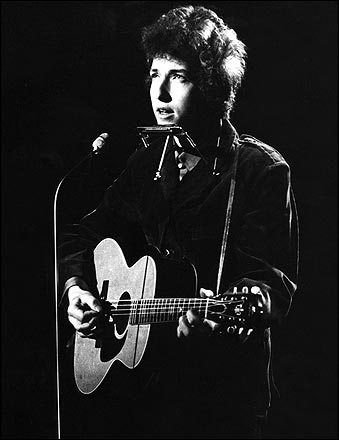
From MTV.com's "Dylan Documentary A Monument To A Major Artist And A Legendary Time" By Kurt Loder:
"Seeing Dylan move through this rich period in the company of people like folkie queen Joan Baez and Johnny Cash (who gave the young singer his own guitar as a sign of respect), and seeing the wondrous array of live clips of performers who influenced him (from Hank Williams and Woody Guthrie to Gene Vincent, Muddy Waters, Howlin' Wolf and even Billie Holiday), you have to marvel at the architecture of this film. The performance footage — especially the extended clips of Dylan onstage with his most ferocious group, the Band — brings the era swarming back to life; the songs offer an understated commentary on the events we see (and of course on the man who wrote them); and the Dylan of today, now grizzled and gray, offers his own tart views on just about everything."
From The Observer's "The Supreme Troubadour" by Robert McCrum:
"The instinctive juxtaposition of savagery and tenderness, the extraordinary marriage of material, ancient and modern, articulated in that feral note of self-laceration have always been keys to Dylan's art. Like all the greats, including Shakespeare and Blake, he also has a spooky ear for the radioactive, associative power of language. So 'Tangled up in Blue', for instance, one of the great songs of all time, takes us into the locked room of the broken heart and also reminds us that it's poetry, not prose, which reconnects us to our childhood selves."
From MSNBC by Eli Lehrer:
"Martin Scorsese's recent documentary about Bob Dylan's early years, No Direction Home, is such a godsend.
Although it has some interesting footage from and insights into Dylan's folk years, the movie really takes off when Dylan leaves behind topical songwriting and, soon after, plugs in. The heart of the film is the footage that was shot for Eat the Document on that 1966 tour and then either butchered or completely ignored by Dylan when he went in to 'edit' the film. Now, it finally sees the light of day, and it manages to be even greater than imagined. From the performance of Like a Rolling Stone that opens the film to the infamous 'Judas' performance of the same song that closes it, virtually everything Scorsese uses from the tour is gold. This is the Dylan (alongside his 22 year-old self singing Blowin in the Wind) that is locked in the popular consciousness, and it's refreshing to be reminded that he really was as revolutionary and remarkable as the hype. It also a reminder of how contrarian he can be - his own in 1967 took footage that was almost perfect and purposely destroyed it."
And, lastly, over on BBC, they examine the question: "Bob Dylan - why the fuss?". Lots of folks reply back with the answer.

Bob Dylan, Neil Young & Eric Clapton, Madison Square Garden, New York City - 1992
Also, see more on Bob Dylan's music.












 Four Dead in Ohio
Four Dead in Ohio
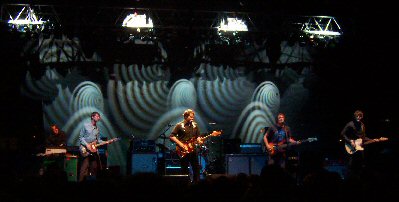




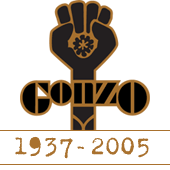
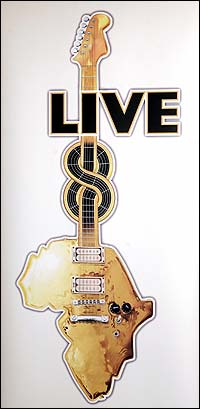

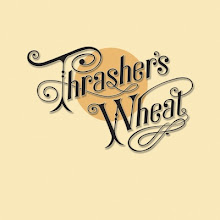

![[EFC Blue Ribbon - Free Speech Online]](http://www.efc.ca/images/efcfreet.gif)


0 Comments:
Post a Comment
<< Home